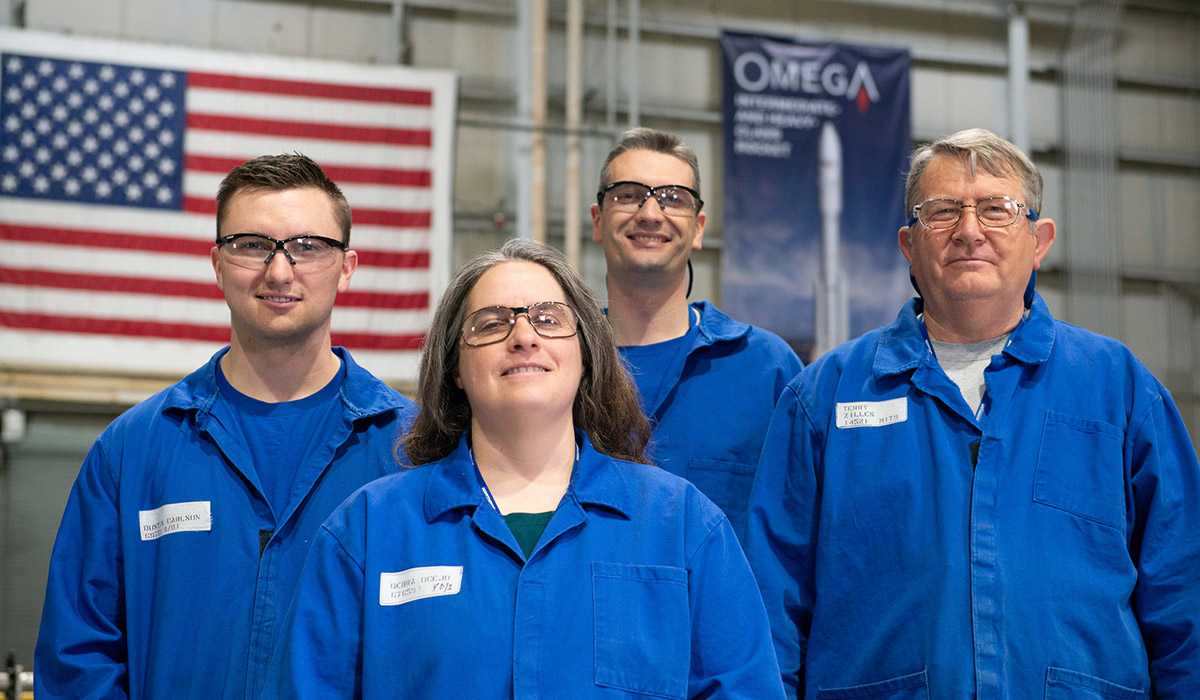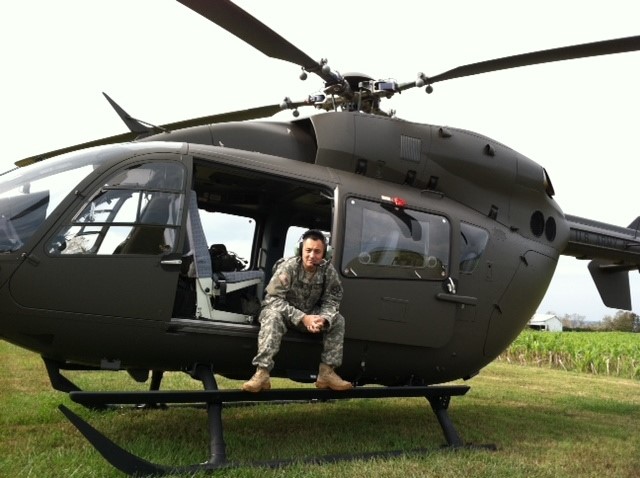Tucked into the hillside off a quiet Utah highway, bunker-like buildings go relatively unnoticed among the brush. Deep inside one of these shed-like structures rests the work of dozens of the country’s best rocket scientists. Soon, years of development and dedication will culminate in a ten-second countdown and a smoke plume. But after the static test, the opportunities are vast.
Flight Systems Team of Technicians, Engineers, Scientists and Program Managers Prepare for the Test
A team of technicians in Promontory, Utah, artfully manipulated the first stage of Northrop Grumman’s OmegA rocket into its final configuration using cranes and other large tooling. After assembly, the 12-foot-diameter and 80-foot-long stage rested on supports, wiring spilling from its forward end and leading to data collection points precisely measured and placed.
Northrop Grumman is building OmegA to launch intermediate to heavy national security payloads for the U.S. Air Force, as well as science and commercial payloads for other customers. Solid rocket motors with lightweight composite cases power the first and second stages. On May 30, 2019, the rocket’s first full-scale static test of its first stage was performed and streamed live for the world to watch.
Northrop Grumman Team Achieves Major Milestone on Schedule
When talking to Scott Lehr, vice president and general manager of Northrop Grumman’s flight systems division, his pride in the work at Promontory is immediately clear. “This first stage ground test is a major milestone. Three and a half years ago we said we would accomplish this test in the spring of 2019, and that is exactly what we did. In the National Security market, schedule is everything,” he said.
Final Preparations and Checks Ensure Perfection
In the days leading up to OmegA’s static test, technicians attached instrumentation gauges and data recorders to measure key characteristics such as thrust, vibration and burn rate. Then they practiced conducting the test, running through and repeating each step of the countdown multiple times. Performing these simulations ensured that all the test systems were calibrated and functioning properly.
“Every countdown step is critical and has to be performed with perfection,” says Jamie Barney, director of test and research operations, propulsion systems. “We have an extremely experienced team, but no one here is ever complacent about a rocket test.”

OmegA’s Static Test
On test day, the entire test bay rolled back to expose the first stage motor attached to three “spacer” segments totaling 177 feet of white casing. When the countdown clock reached zero, the igniter, housed in the forward segment, rapidly ignited and pressurized the entire motor.
The motor continued to burn for approximately two minutes, producing more than two million pounds of thrust channeled through a vectorable nozzle. During the test, 30 to 40 technicians and engineers lined the control room, closely monitoring the sensors, instrumentation and cameras on and around the motor. They collected approximately 700 data channels, gauging everything from case growth to component stresses to motor pressure to temperatures, all essential data to qualify OmegA for flight.
“The first stage rocket motor is the heart of the OmegA vehicle,” says Paul Messer, OmegA first and second stage motor program manager. “With the critical data from the static fire test and post-test inspections, we can qualify our products and ensure their reliability to our customers.”
After the OmegA Static Test
For about six months after the test, the team assessed the data. They also disassembled, evaluated and dissected the hardware to observe the effects of motor operation. A post-assessment verdict of reliability across all systems is necessary to qualify the motor for flight.
“Successfully completing the full-scale static test is a significant milestone,” says Kevin Wilder, OmegA deputy program director. “Everyone on the team is personally invested in this program, and we are all looking forward to OmegA’s first launch in 2021.”
Interested in working on the OmegA rocket team? Click here to find out more about opportunities on OmegA, or other opportunities at Northrop Grumman.
Return to Life at Northrop Grumman home page.








